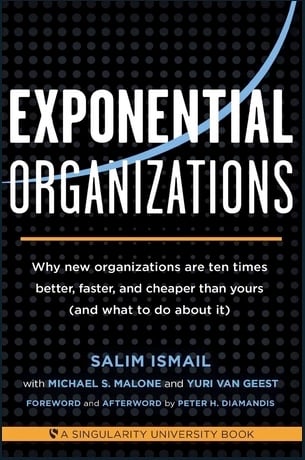Big data has been described as the “new oil” as far as business assets go. However, a better analogy might be the Wild West. It is fairly easy for any business to now leverage BI and data to make decisions; however, the “how” still isn’t clear, and neither is the application.
According to KPMG, when the strategy is data-driven, it helps to make sense of structured and unstructured data and applies that knowledge to a wide range of business functions. The result is that there is no more guess work, and results can become more predictable. Far more predictable than conventional forecasting techniques based on static historical financial reports.
MIT Sloan School of Management professors Andrew McAfee and Erik Brynjolfsson explain in a Wall Street Journal article that companies that were mostly data-driven had 4% higher productivity and 6% higher profits than the average.
Businesses no longer have to blindly guess what their next move will be. So how do you embed data-driven business strategies?
Tweet this
A publication from BI-Survey showed that 58% of companies surveyed base at least half of their business decisions on gut feel or experience, instead of data and information. On average, companies would use only 50% of the information available when it came to decision-making. Which shows that even though the data exists, companies still need help using it to define strategy.
Advantages of Having a Data-Driven Business Strategy
Making data-driven decisions can give you some specific answers and quantification to questions that previously were guesswork. For instance,
- Who are my customers, and what do they care about?
- Who spends the most on my products/services?
- Who is most likely to purchase my product?
- What effect will a pricing change have on sales?
- Which marketing message will sell the most?
- What attributes should our new product have?
Compared to older methods, with data-driven decision-making, you can make decisions in real-time as the market or your business changes.
You can apply thresholds to activities and performance, and if those are consistently met, you can change your strategy accordingly.
For example, in an interview with The New York Times, Google’s Head of People Operations, Laszlo Bock, explains how the company collects aggregated feedback on team managers’ performance, which can be very self-motivating:
One of the applications of Big Data is giving people the facts, and getting them to understand that their own decision-making is not perfect. And that in itself causes them to change their behaviour.
Rather than a one-time investment in some kind of training or seminar, this kind of data can be an ongoing resource, one that continually reveals new pathways to improvement as more and better data is collected.
Big Data allows people to understand that their own decision-making is not perfect.
Tweet this
1. Think of It as a Road Map
And not like a crystal ball. Some people think of analytics like a mystical soothsayer when it’s actually more of a guide. That is to say that starting with the right attitude towards the data is going to save you a lot of disappointment in the future.
If you go into the transition thinking “What can data do for me?” then you’re going to have a bad time.
Go in thinking, “What can I do with the data?”
“There is a difference between numbers and numbers that matter,” write Jeff Bladt and Bob Filbin in an HBR post from 2013.
One of the most important steps in beginning to make decisions with data is to pick the right metrics. Good metrics “are consistent, cheap, and quick to collect.” But most importantly, they must capture something your business cares about.
To make decisions with data, begin by picking the right metrics.
Tweet this
2. Define and Use Standard KPIs
Around 79% of businesses have a defined standard set of KPIs, but only 36% are using them pervasively across the organisation.
This is obviously a major issue and an area for improvement for data-driven decision-making. Best-in-class companies rely on defined and pervasively used KPIs much more than average and laggard companies. Good KPIs are not only SMART, but they also cover leading and lagging indicators.
Leading KPIs tend to communicate a change in the environment. They try to be predictive in nature. The Investopedia definition for lagging indicators is they “confirm long-term trends”.
3. Use Dashboards to Make Data-Driven Decisions
Utilising dashboards can be an efficient way to deliver data on KPIs that doesn’t interfere with standard processes.
Integrating data analytics into everyday business practices can make the decision process smoother and more efficient.
Take a look at datapine, for example, a company that has made it easy for companies to sort through data. Its dashboard is customisable and allows you to use customised charts and graphs to easily display the data you collect.
Other companies such as Oracle have seen the importance of visualisation and are playing catch-up to offer it to their clients.
To put it plainly, some IT infrastructures aren’t up to snuff. Some businesses are still working off Excel spreadsheets as their delivery system for making sense of data.
But software architecture is being designed for this specific purpose all the time. It may also be in a company’s best interest to expand their IT department to include professionals who can make the most out of a vast array of data.
So where to look first?
4. Focus First on Efficiency
Most of the Fortune 500 companies that use analytics use it to cut costs. They eliminate programs that aren’t working. They figure out how to source ingredients for less. They cut marketing outreach away from demographics that just don’t seem interested.
You want to use the data to let you know how to do things cheaper and whether or not those things are worth doing at all.
In short: Let the data tell you no. If analytics is a roadmap, you’re still the one in the driver’s seat; the data is just there so you can mark off the dead ends.
If analytics is a roadmap, you’re still the one in the driver’s seat; the data is just there so you can mark off the dead ends.
Tweet this
5. Be Aware of Correlation vs Cause and Effect
So how do you make the right decision about your strategy? The phrase “correlation is not causation” is commonplace, but figuring out just what it implies in the business context isn’t so easy.
When is it reasonable to act on the basis of a correlation discovered in a company’s data?
Thomas Redman, in his article in HBR, examines causal reasoning in the context of his own diet to give a sense of how cause and effect works.
Additionally, BCG’s David Ritter offers a framework for deciding when the correlation is enough to act on:

The more frequent the correlation, and the lower the risk of being wrong, the more it makes sense to act based on that correlation.
The more frequent the correlation, and the lower the risk of being wrong, the more it makes sense to act based on that correlation.
6. Decide How You Will Decide
If you know you need to make a decision, how can you find a model that will help you decide?
There is a wide range of models and theories that can be used to find the right decision.
Game theory attribution assigns (with the help of algorithms and the Shapley value) data points fair credit for a decision based on their true contribution. It paints a well-defined and precise picture of the custom journey and identifies which touchpoints perform the best and which ones don’t.
Google uses Data-Driven Attribution based on a concept from the cooperative game theory called the Shapley value. Economics Nobel Laureate Lloyd S. Shapley developed this as an approach to fairly distributing the output of a team among the constituent team members.
The Data-Driven Attribution algorithm computes the counterfactual gains of each marketing touchpoint — that is, it compares the conversion probability of similar users who were exposed to these touchpoints to the probability when one of the touchpoints does not occur in the path.
Data scientists at Armorway have developed patented game-theoretic algorithms by exploiting data analysis and machine learning that uses big data to draw meaningful visualisations and develop intelligence driven deployment strategies.
This game-theoretic algorithm is being used by a high-profile Hollywood event production and the University of Southern California for improving campus security during the major Hollywood event.
The algorithm will be used to classify and categorise different types of situational vulnerabilities during the Hollywood event.
7. Consider a Bayesian Approach
There is also the Bayesian method, in which you simply guess at the answer and then continue to collect data as it comes.
It doesn’t convey the same sense of certainty that the “hard numbers” of the frequentist method do, and you can still get wrong answers.
However, they become less wrong over time and you get a sense of how likely they are to be right.
Noted polling analyst Nate Silver, for one, is a strong advocate. Many college textbooks are being revised to put greater emphasis on Bayesian inference.
However, business strategy is still largely mired in misleading conclusions driven by confidence intervals.

















